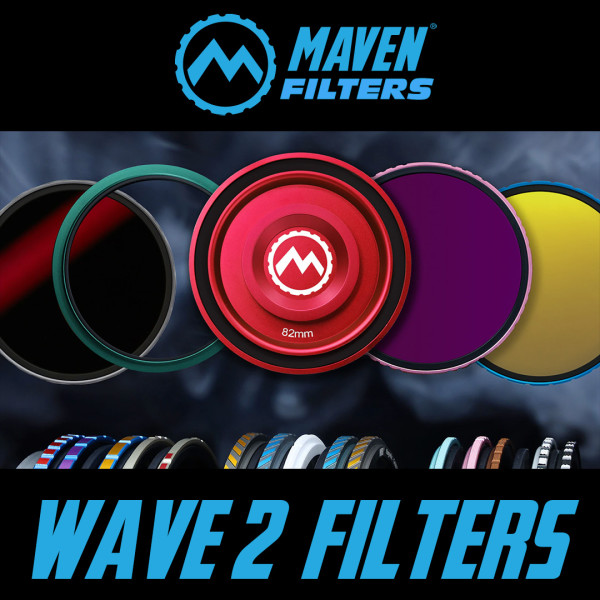
Dark Polarizers, Variables, Graduated NDs, Infrared 720, Starry Focus, New Cap, NDs, & More!
Since shipping, we have won multiple product of the year awards for 2023 from Peta Pixel & The Phoblographer!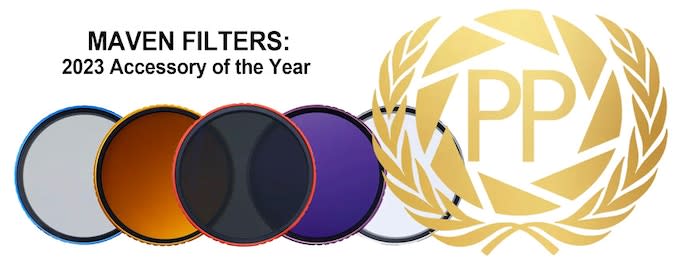
This serves as a testament to the Kickstarter platform & it’s supporters. It began with an idea, extensive testing, launching it on Kickstarter and we now find ourselves in the same conversations as the biggest brands on the planet. There is no way we would have made it without Kickstarter or you, our Legendary backers – we are SO thankful to you!
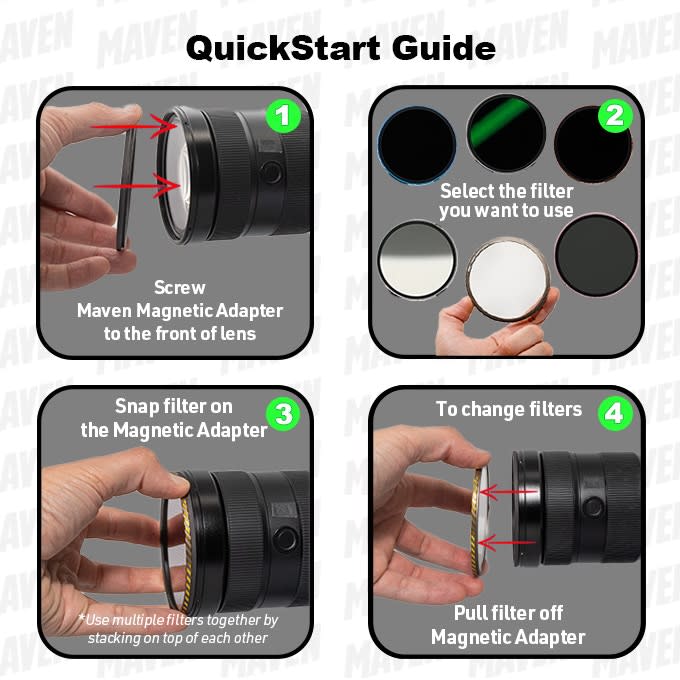
(Thank you so much to MAVEN Legend Steve Bell for helping test our Wave 2 Filters!)
Because this is our second Kickstarter, you can support with confidence knowing we have experience & delivered as promised on our first campaign with arguably the most innovative & convenient camera filters available. We will meet any challenges we face to give you a truly outstanding product & experience.
We have listened to your feedback and created amazing new designs. Our new filters have been tested and approved by professionals in the field.
Here we go! Wave 2 of MAVEN Filters:
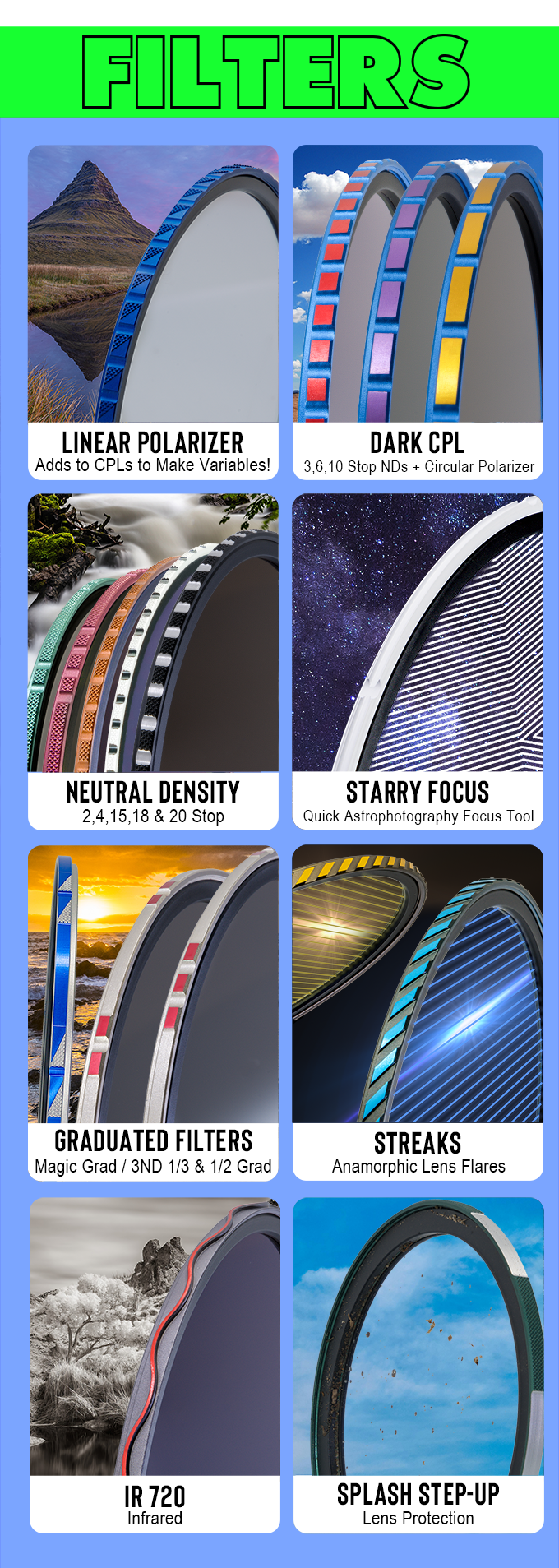
The sizes available for each filter will 82, 77, 72, 67, and 62mm filter threads. 95mm size will be available as a single filter add-on.
(We will add more sizes based on demand in March 2024).
How to Support This IndieGOGO:
This IndieGoGo is all about customizing your personal set for your shooting needs. You do not need to decide which exact filter types at the time of backing. Rewards and pricing are going to be most favorable the earlier on in the IndieGoGo.
Choose the number of filters you desire in your set, then any add ons on the following page (adapters, caps, any additional Single Maven Filters, etc). When the campaign is over, we will send you a survey where you will choose your filter types & sizes, add-ons, as well as collect for shipping based on where you live.* You may choose any Wave 2 filters as a reward, even of different sizes between 82, 77, 72, 67, 62mm), or even several of the same size and type filter for your rewards).
*We anticipate shipping will be about $10-20 for US customers, and $30-45 for most outside the USA (some exceptions). Backers assume all responsibility for import tarriffs from their respective countries.
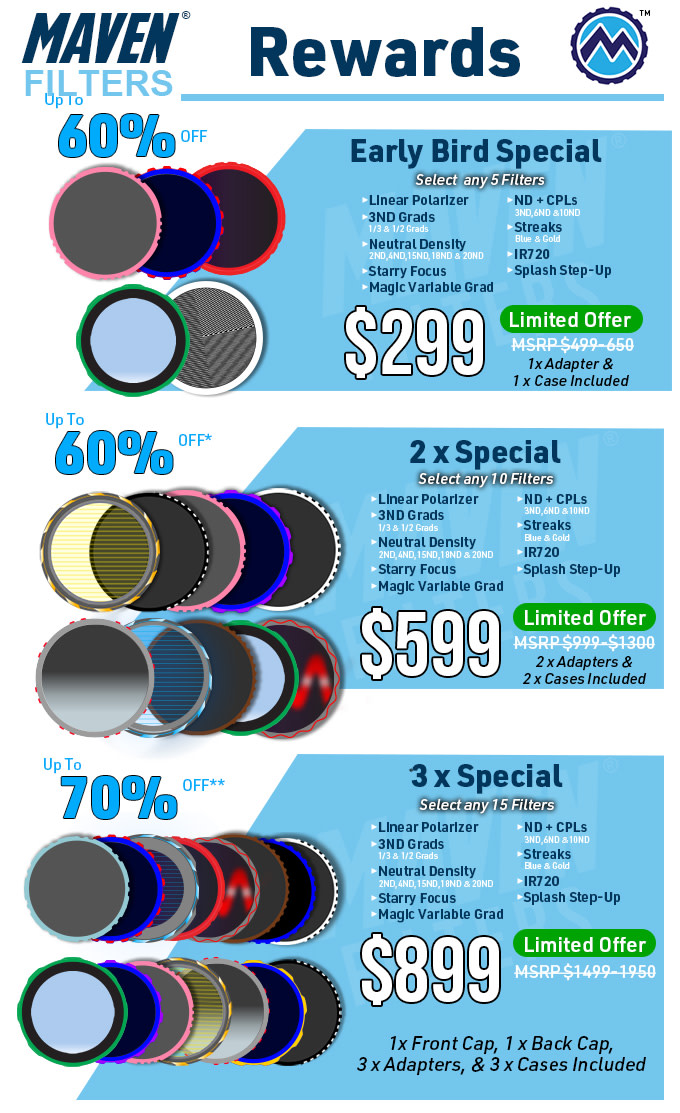
This WAVE 2 MAVEN IndieGoGo builds upon designs & strategies that made our first IdieGoGo so successful including:
A. World Class Optical Performance, with AGC Optical Glass & 16 Layers of MRC.
B. Quick To Change, Long-Lasting, Strong, Magnetic Mounts
C. As thin & as lightweight as possible, reducing camera bag weight & space
D. Color Coding & Unique Knurling for Fast Identification
E. Lifetime Warranty & Outstanding Customer Support
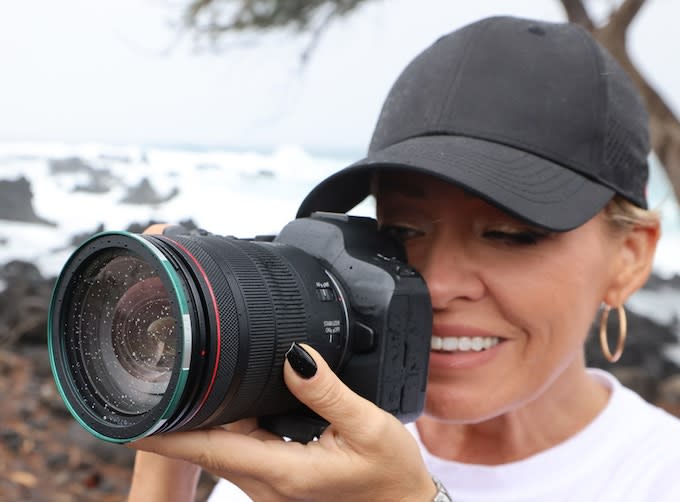
77-82mm MAVEN Step Up Splash Adapter during testing in Hawaii
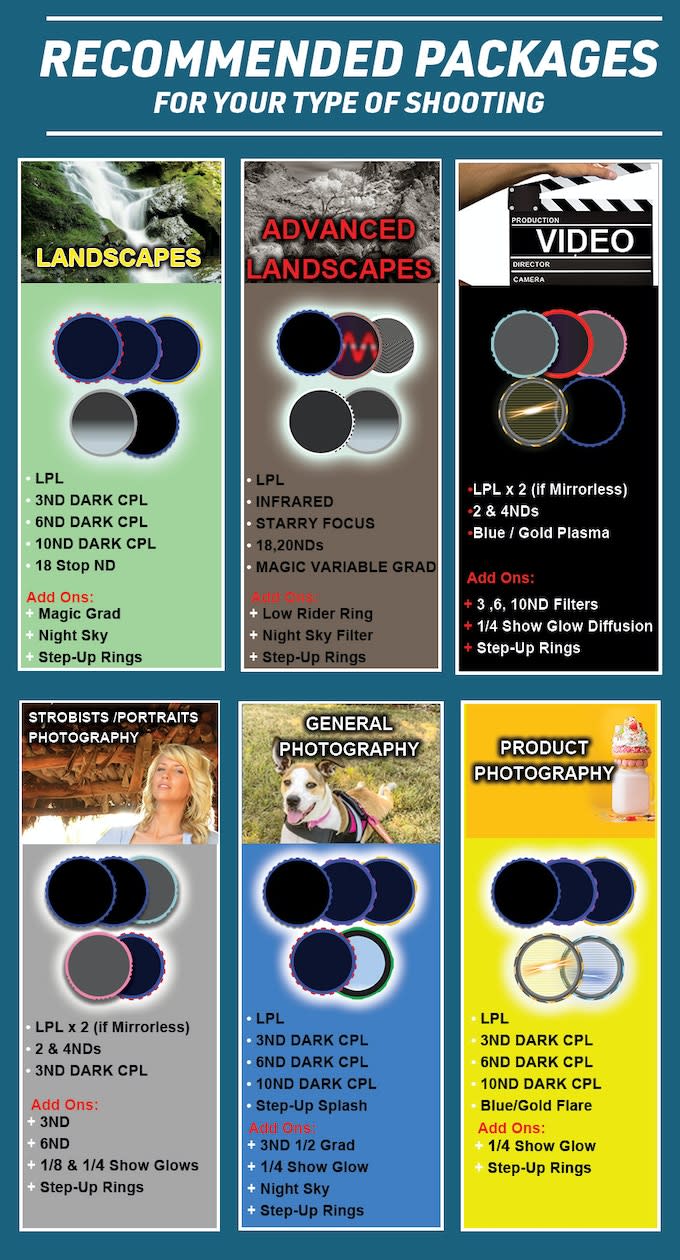
Michael’s Wave 2 Recommendations for Beginners
A Universal Language, but Reading is Not Necessary
Only MAVEN Filters use color-coding and ring knurling as affordability, a design approach that suggests how the filter can be used. For example, our polarizer is blue because it makes the sky pop and can remove reflections from water. This makes it easy to remember which filter does what. Unfortunately, there are only so many single colors to draw from, so we needed a new way to identify each new filter moving forward.
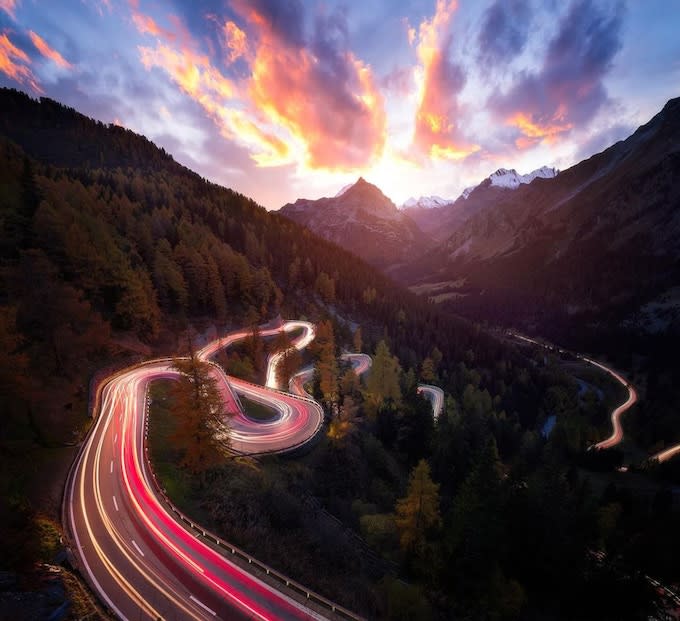
Car Trail Sunset – By Louis Chan Using MAVEN filters
“That is Impossible.” My manufacturer answered when I asked them to create a multi-colored, non-black filter ring.
“Then consider it mission impossible!” I encouraged as I hummed the theme.
A few weeks later, we had our first 2 colored filter ring, which became our Show Glow mist filters, featuring grey rings with white knurling design that housed optically spectacular diffusion glass. Once we grasped the new 2-color process better, I knew the sky was the limit to create the most easy-to-use & beautiful photography filter ecosystem on the planet. It was time to push the accelerator through the floor board.
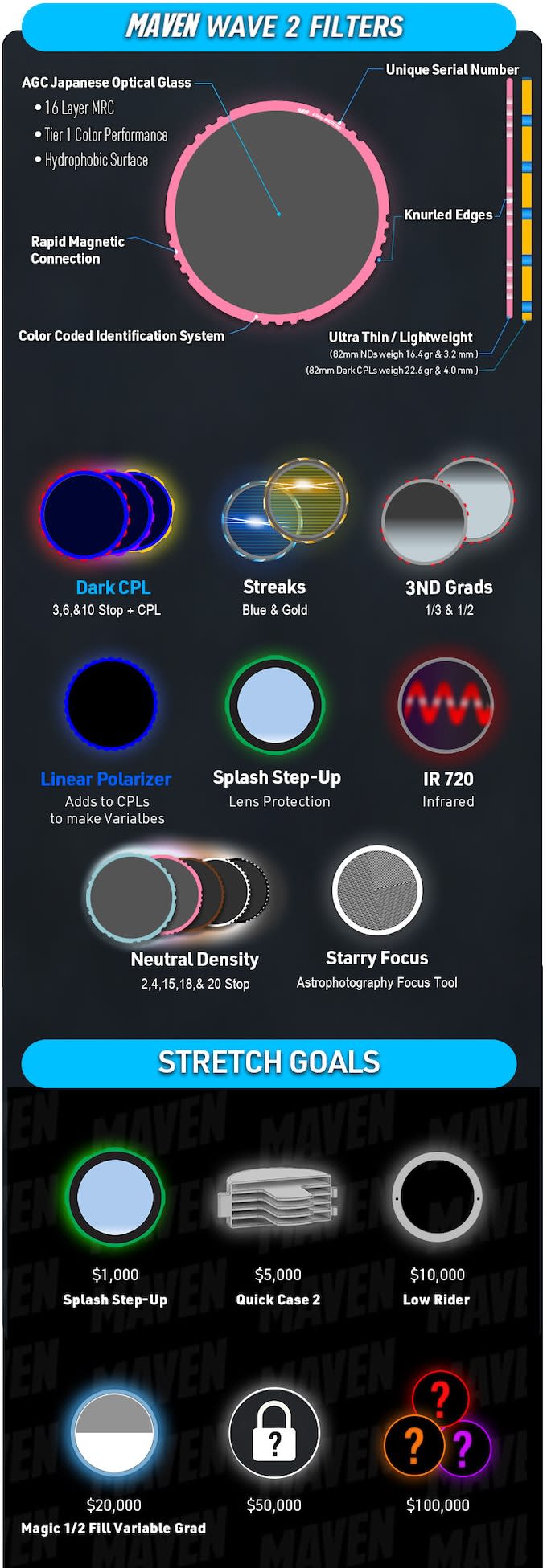
Enter The Dark-CPLs
We received a common request for Dark CPLs. This type of filter integrates a CPL (Circular Polarizer) with a regular ND into a single filter, eliminating the need to carry an extra filter for those who typically use both. More importantly, it reduces vignetting, especially on very wide-angle lens focal lengths, such as 16mm.
If our existing Polarizers are blue and our 3 Stop ND is Red, we wanted a design that incorporated both colors:
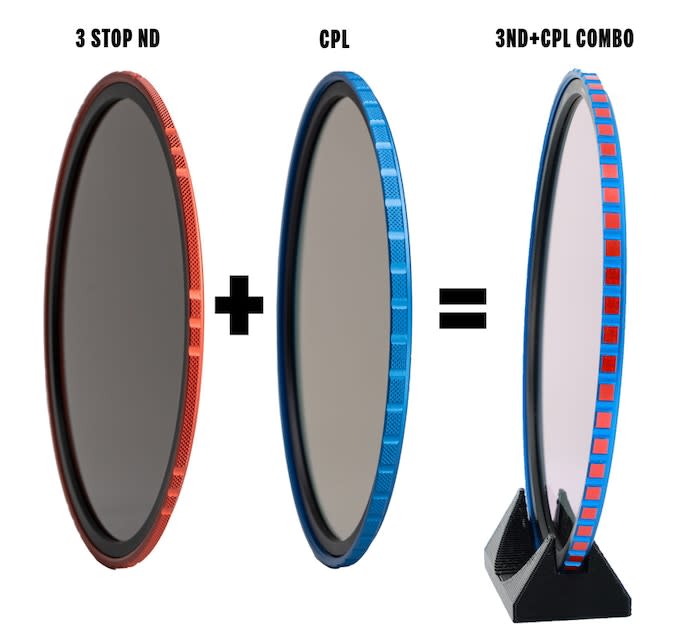
The Birth the MAVEN Dark CPL – Merging both the ring designs & glass into one new filter type!
This 2 colored approach builds upon our established filter language, meaning that if you know the colors of the first filters, you will know the new filters are as well. Blue will always mean some kind of polarizer!
I asked my manufacturers to make them in 6 Stops (Purple) as well as 10 Stops (Gold). This was the result:

Early Prototype Color Ring Tests for MAVEN Dark CPLs
While the colors were vibrant and each offered affordance, there was a problem: the knurling was the same. Every MAVEN filter should feel different by touch.
The deep grooves we use on our CPLs are designed to allow for rotating the filter through a lens hood window. Without these deep grooves, one cannot grip them enough for rotation, defeating a basic control of CPLs under a lens hood. The grooves had to stay, but the knurling design had to change. I went back to the drawing board, trying to match the number of sides of the knurling, with the number of stops:
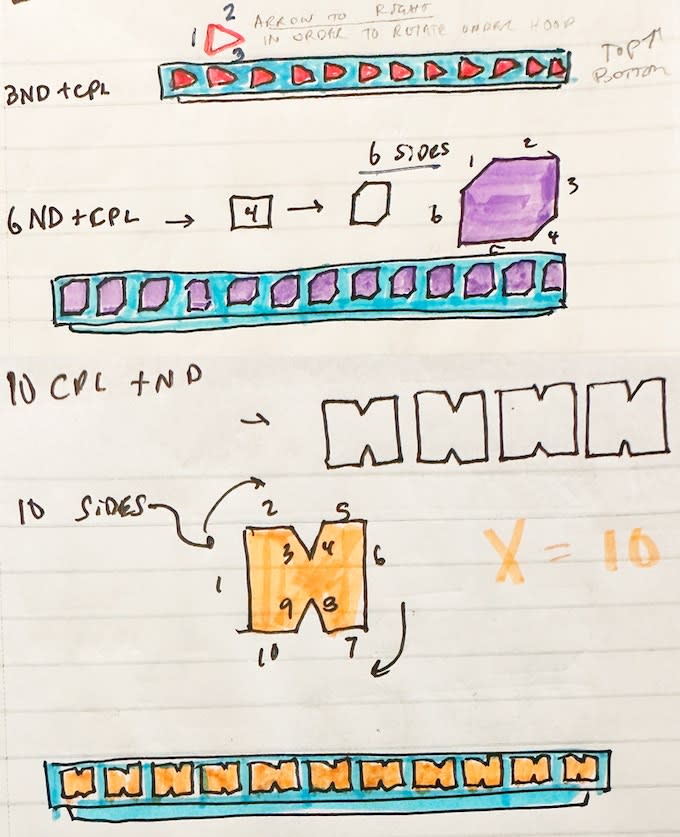
DARK CPL DESIGNS with unique knurling: Each knurl represented the number of stops by the number of sides. Triangle: 3 Stops, Hexagon: 6 Stops, “X” Type Shape: 10 Stops
Weeks later, this is what my manufacturing team sent back:
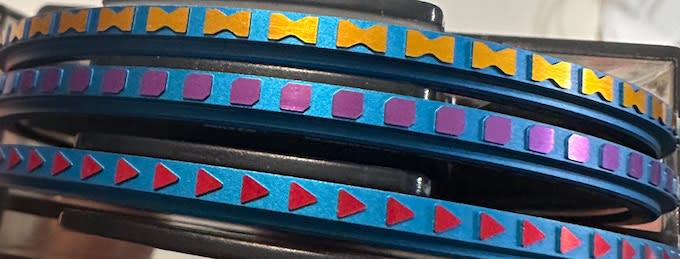
MAVEN’s 2nd Round of Prototype DARK CPLs with Unique Shape Knurled Rings
There was something about them that I didn’t like. They lacked the ‘it’ factor in their appearance, and the designs were not simple. I was overthinking.
What about changing the spacing between each groove to indicate respective stops?
I drew up a new design:
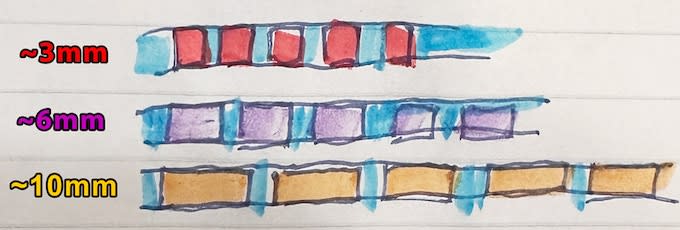
Changing the knurling length would differentiate filtration density from one another by touch, while maintaining groove depth & simple design. We could say they were more or less close to 3, 6 and 10mm, even if they were a little shorter.
When you know you have it, you can feel it in your bones. This felt right:
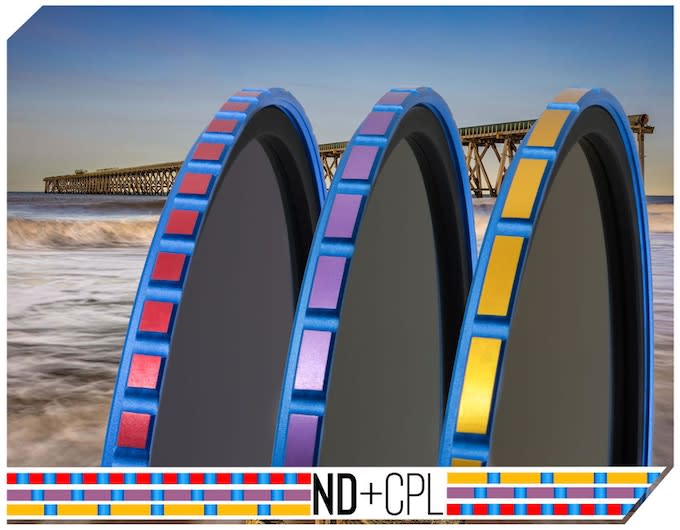
Close your eyes & feel the difference: Every MAVEN filter type can be identified by touch.This approach makes MAVEN filters more usable to all, including those with vision limitations.(Background Image Credit to Steve Bell using MAVEN Dark CPLs)
Less Vignetting & Better CPL Color Performance Confirmed
We tested our Dark CPLs on some of our very wide angle zoom lenses:
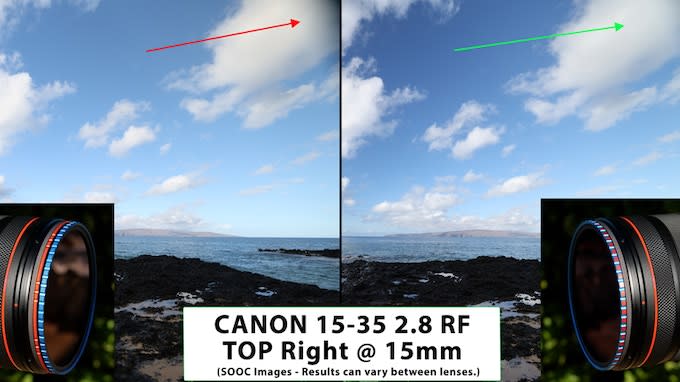
Stepping up is the optimal method for controlling vignetting, but we recognize that not everyone wants to do this. Vignetting is nearly eliminated on the Canon 15–35 2.8 RF @ 15mm using an 82mm single dark CPL. (Results may vary between lens models and copies.) Sony’s 16–35 2.8 GM requires the MAVEN Low-Rider Ring to completely eliminate vignetting or zoom to 17mm.Note: The very slight Yellowish Hue in the cloud on the left (CPL) vs the whiter cloud on the right (Dark CPL).
Something else you will notice is a very slight improvement in color performance (Look at the clouds). Most CPLs, including the original MAVEN CPL, have a very minor yellowish hue due to the CPL film, however we are able to leverage the ND color in our Dark CPLs to counterbalance the yellowish polarizing film color. This results in even better film color performance as a DARK CPL, over our normal MAVEN CPL.
(Note: While there is no such thing as a “no-color-shift” or “100% color neutral” polarizer (this is unavoidable due to physics), we can say our Dark CPLs are Elite/World Class in controlled-lighting conditions. We spent months getting them right.)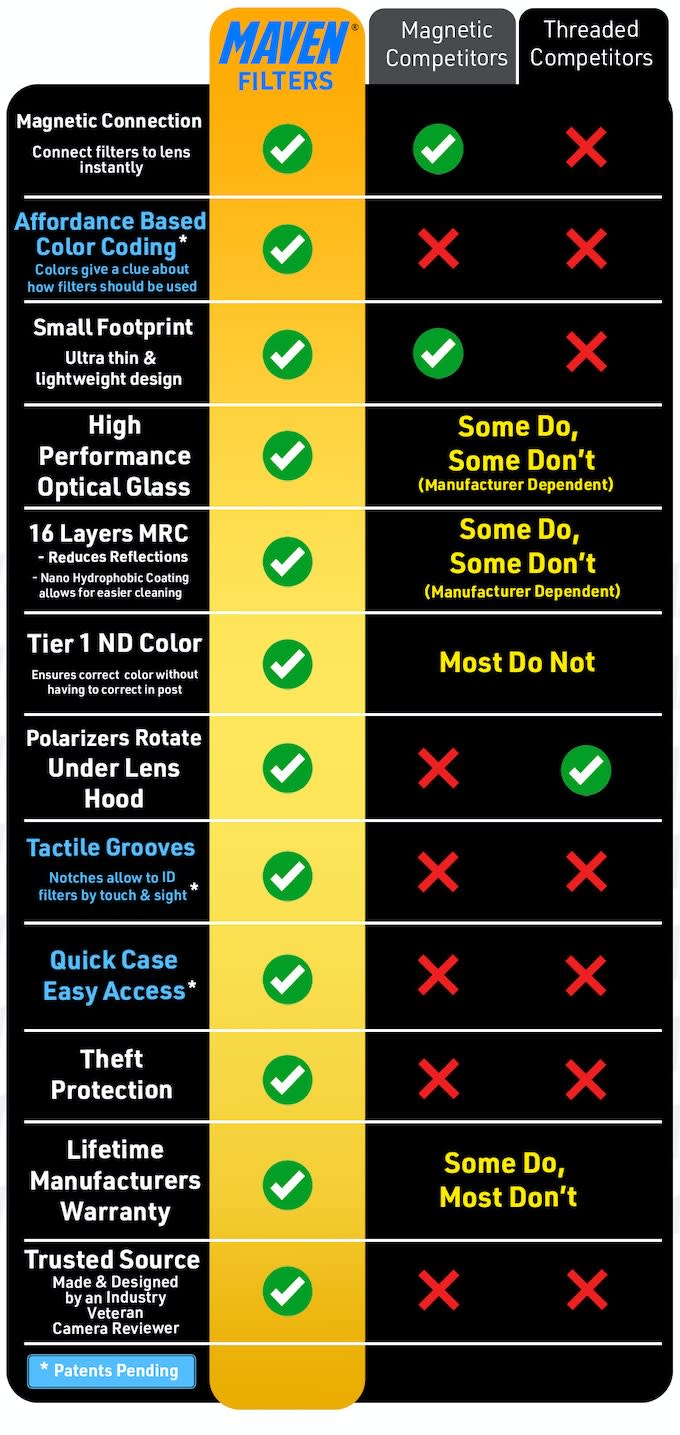
How Variables led to a New Polarizer meant for Mirrorless Shooters
VNDs (Which I prefer to call “Variables” or “Dual Polarizers”) have limitations in regards to color shifts & X artifacts (which are large dark “X”s that appear at extreme settings).
The “N” in VND stands for Neutral. Dual Polarizers cannot be neutral, just watch the sky color change any time you use them. There is a deeper debate about how ‘VNDs’ are marketed. Suffice it to say that including the word ‘Neutral’ is misleading, and I have made videos discussing this.
That said, I know many of you love them. We made some Variable prototypes years ago, but I was not happy in their performance, so we focused on solid NDs for quality & simplicity reasons.
Many of you asked we take another shot at Variables since our last Kickstarter. You wanted the speed & convenience in a magnetic, color-coded solution to give step-less filtration control in rapidly changing lighting conditions.
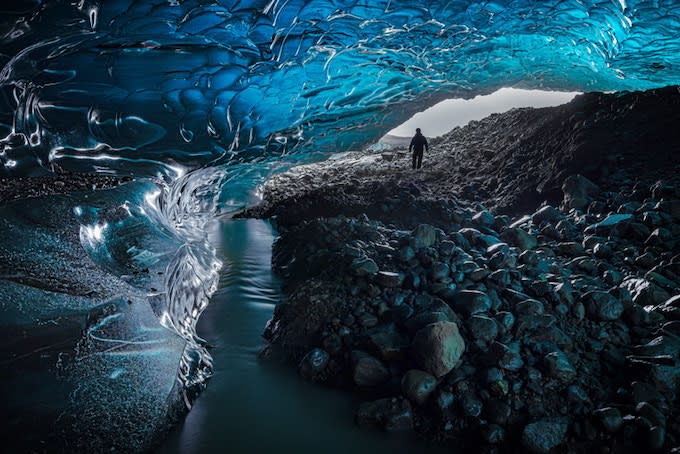
Icelandic Ice Cave – By Steve Bell Using a Maven Polarizer
A Fresh Start
Elon Musk teaches a First Principles approach to product design, meaning to break the thing down into it’s simplest form. Variable filters are 2 polarizers.There are different kinds of Polarizers, but most “VNDs” are made from either linear polarizers or circular polarizers, or one of each working together.
For many decades, CPLs were the go to polarizer for film cameras, followed by DSLRs. The reason? Linearly polarized light confused the cameras metering and focusing systems of any camera with a mirror-box. This is because of how linearly polarized light inconsistently bounced off the mirror. CPLs are better for DSLRs because of how a circularly oriented light bounces off a mirror before being metered.
In fact, CPLs are universally compatible with both DSLRs & mirrorless cameras. They just work GREAT and this is the most common type of filter on the market.
This is why when we first launched I chose a CPL. All camera owners could use it.
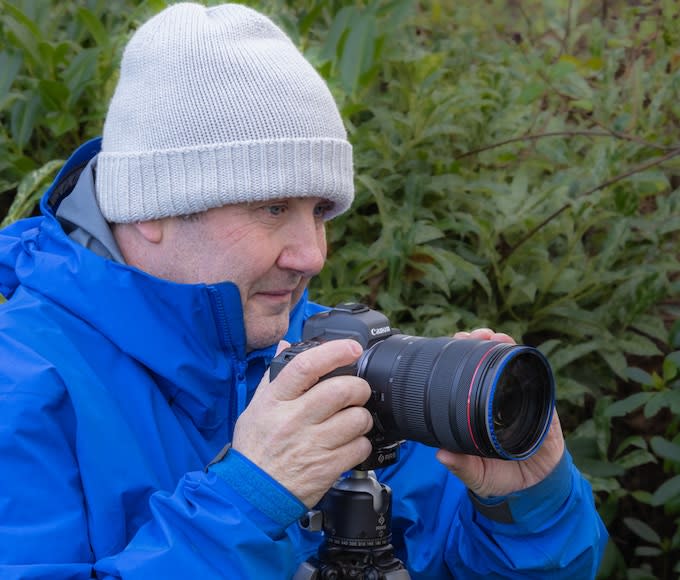
MAVEN Legend Steve Bell Tested & Reviewed Many Wave 2 Filters. He writes:”Everything performed just brilliantly again in some very challenging conditions! There was next to no flare when shooting into the sun which was amazing and also when they got wet, they were so easy to clean.” Thank you for all of your support Steve!
Linear Polarizers vs Circular Polarizers –
A linear polarizer (LPL) changes light differently than a circular polarizer (CPL).
Linear & Circular polarizers start as linear polarizers, with the difference between the two being that CPLs, also have something called a quarter wave plate added which allows light to be transmitted in a helical shape instead of a linearly oriented wave. It is the shape of these waves that make CPLs good for DSLRs, and LPLs bad for DSLRs.
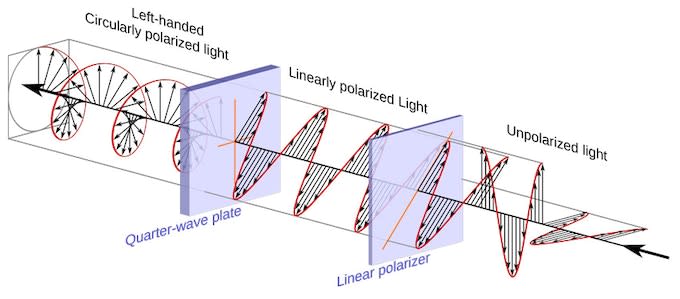
From Right to Left:Unpolarized Light Transforming to Linear Polarized Light Transforming to Circular Polarized LightSource: Wikipedia
Despite their universal compatibility, unfortunately, most CPL films also have a yellow hue to them, creating a very slight color shift when not color corrected.
While there isn’t much we can do to fix color shifts related to polarized light, we began a search to find a color-free film and one that would work great as a “Variable Density” filter.
New Polarizing Film Technologies
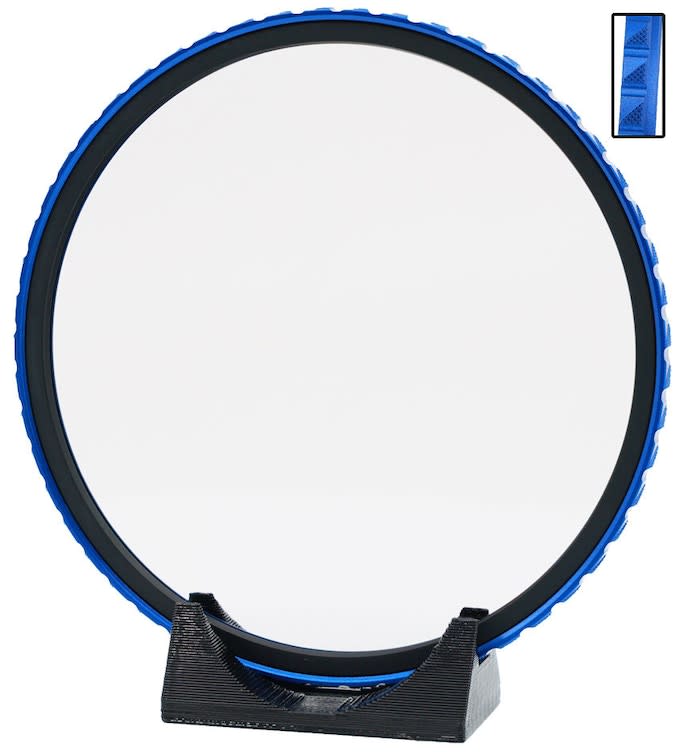
The MAVEN Pure Linear Polarizer – AKA Variable ProtagonistUpper Right: Triangulated Knurling Indicates Ramping Filtration Ability When Paired with any MAVEN CPL
New polarizing films have emerged recently that claim to eliminate color shifts related to polarizing films. I tested many different polarizers & films in controlled lighting conditions using the same test I used on NDs over the years:
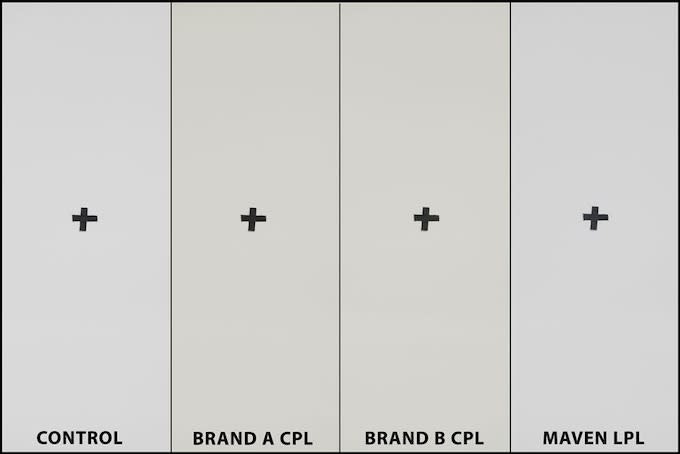
Subtle yellowish Hues are common in most CPLs, including the Original MAVEN CPL. The New MAVEN LPL has received the highest film color score of any polarizer we have ever tested, including near complete neutrality in the center.
One of the candidate linear polarizing films was far and away better than anything I’ve ever seen, and there was a loophole: Camera owners are going mirrorless. Without the mirror, LPLs would work 100% fine on mirrorless cameras. We already had a good universal CPL for all of our customers. As soon as I saw the LPL’s score, I knew we had the film for our next polarizer.
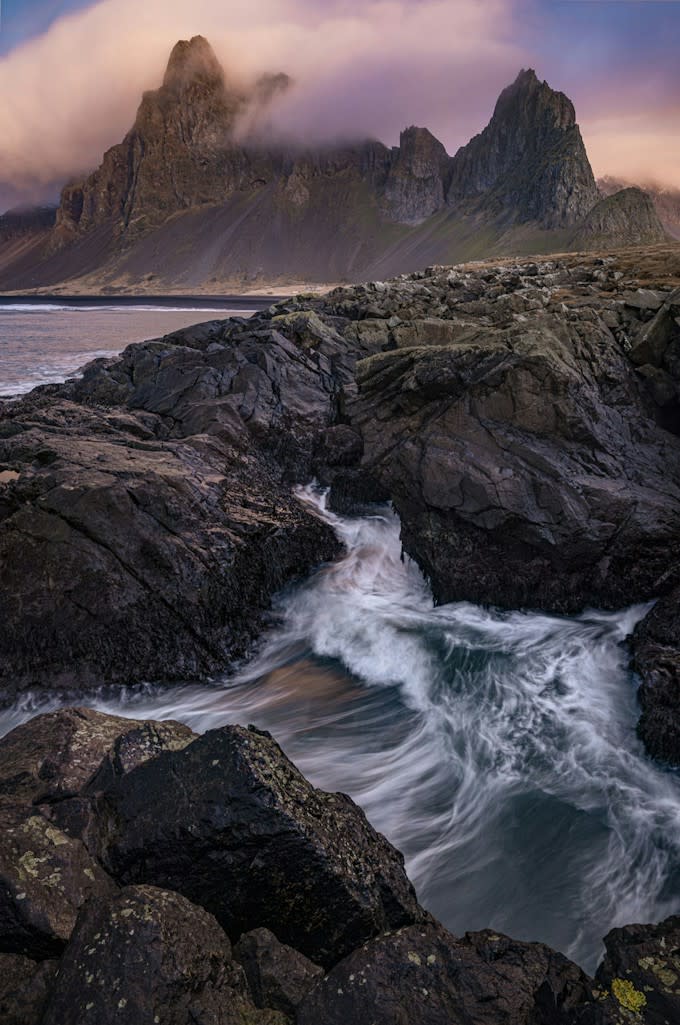
Iceland Shore – Taken by Steve Bell Using the New MAVEN Pure Linear Polarizer
Being that polarizers are a staple of landscape photographers, the NEW MAVEN Pure LPL is a welcome addition to the lineup for our mirrorless shooting legends who want even better performance minimizing film related color shifts.
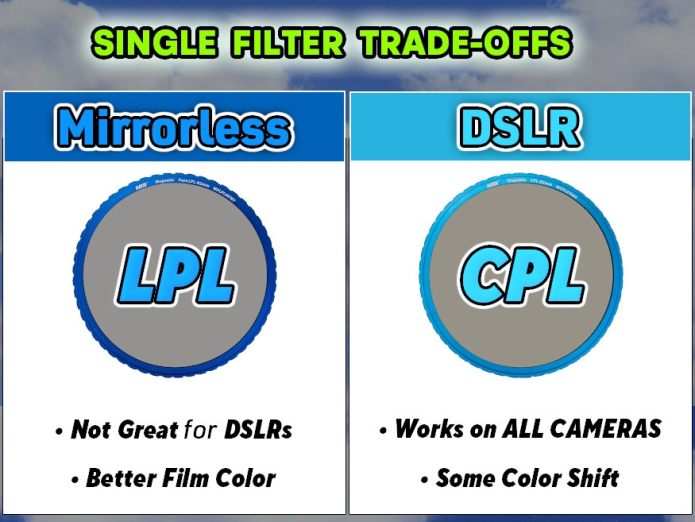
A New Variable System
We did even more tests using our new LPL as the variable protagonist (the front element of a Variable system) & learned some interesting things:

Variable Filter Film Color Performance Swatches Nearly All Popular “VNDs” we tested display strong color cast in controlled lighting conditions.
1. All “VND” Filter Systems we tested scored poorly for film color. (Likely the additive effect of 2 CPLs film color shifts compounding.)
2. Adding a MAVEN LPL to a MAVEN CPL created a strong Variable system that would work on all cameras, but had some very light color shift due to the CPL film.
3. Adding a MAVEN LPL to another MAVEN LPL resulted in a near perfect film color Variable Density filter, but wouldn’t work well on DSLRs.
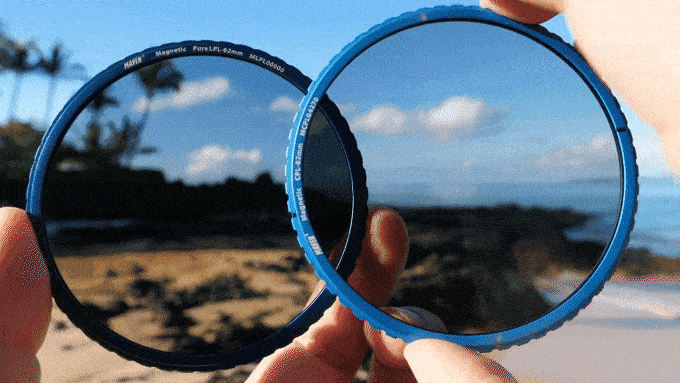
The NEW MAVEN LPL Teams Up with the MAVEN CPL to create a dual polarizer variable system!
By placing the MAVEN LPL in front of the existing MAVEN CPL, we now have a ~1.3-5 Stop Magnetic Variable at our fingertips that is compatible with all cameras. We can adjust the relative alignment of each polarizer & thereby control the amount of light that passes through the combined filter assembly. This is very useful for managing exposure without altering other camera settings like aperture, shutter speed or ISO. (If you own a mirrorless, 2 LPLs would be even more color neutral with the same 1.3-5 Range).
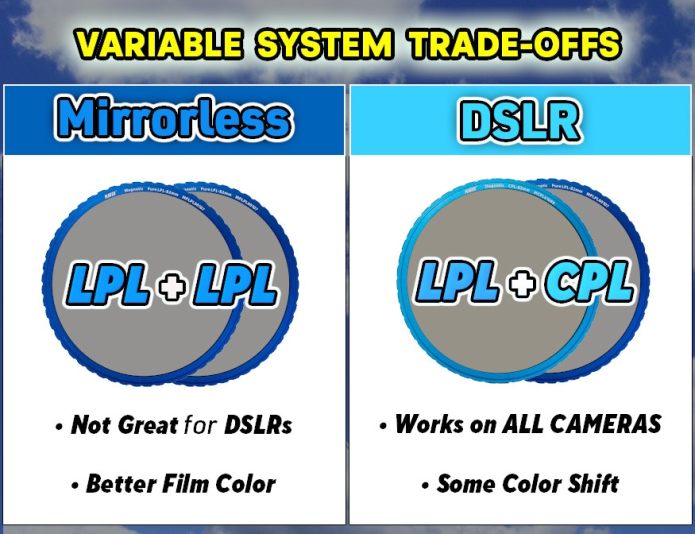
(Note: Both Variable Systems are most useful in the less dense ranges, typically between 1-3.5 stops. All Variable Systems have cross-polarization artifacts, including MAVENs, that start to become visible to trained eyes in testing conditions around 3.5 Stops or greater with wide angle lenses. This is unavoidable due to the physics of polarizers.)
Cross artifacts can be avoided by stepping up to a larger filter size or using more telephoto focal lengths. Most manufacturers prevent heavy artifacts by physically locking how far you can rotate the two components. The MAVEN Varible System is free turning, so if we are not paying attention, we can run into this these artifacts. For best results aim for 1.3-3.5 Stops.)
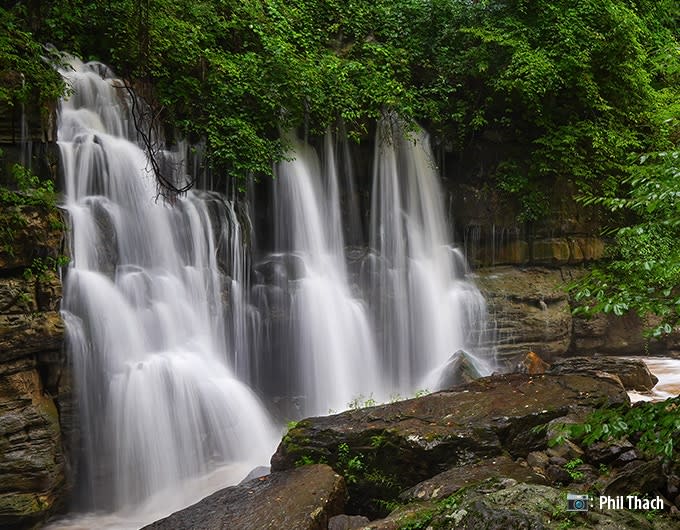
Long exposure Waterfall by Phil Thatch using MAVEN Filters.
I was happy with these results because it meant my customers who wanted a variable solution could get more functionality out of their existing CPL, just by adding a new LPL. The popular “VNDs” can easily run $250 each.
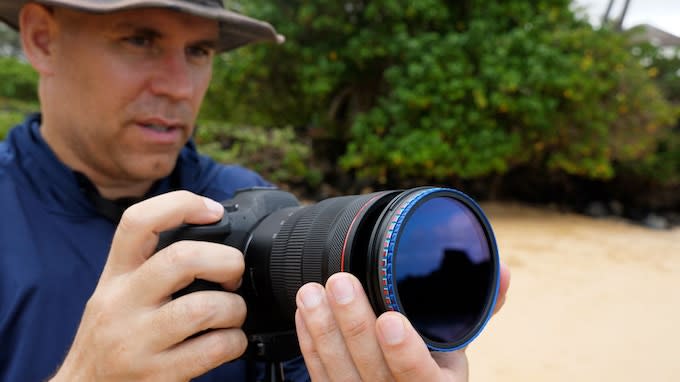
The MAVEN LPL is Multi-Role: 1- As a polarizer 2 – As a Variable Filter Activator with any other MAVEN CPL (Including DARK CPLs)
Unrivaled Versatility – When 1 + 1 = 3
Incredibly, the new LPL also transforms each of our upcoming Dark CPLs into Variable systems, adding 1.3-5 stops to each of them.
By separating the 2 polarizers into different systems, we have a far more flexible set of tools and less weight to carry over multiple VND systems. Additionally, having both polarizers free turning means base polarization can be adjusted, independently of the filtration density.
Our new LPL + Dark CPL combos mean you can carry 2 individual filters, and have 3 different tools!
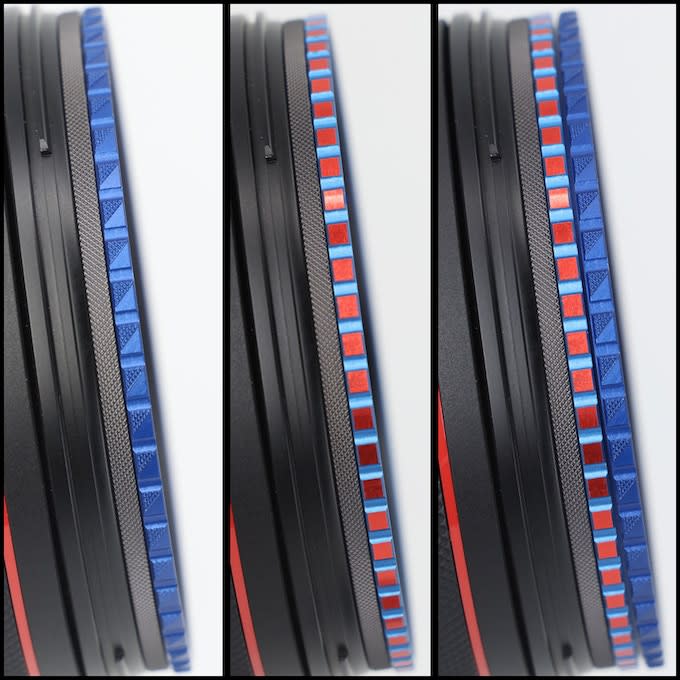
MAVEN Filters Functionalities Stack so 1 + 1 = 3 From Left: 1. Linear Polarizer – 2. Dark CPL 3 Stop – 3. 4.3-8 ND Variable Combo
While stacking filters isn’t new, it is not convenient for common filters due to the amount of threading & unthreading required in standard filters, and is therefore largely abandoned.
MAVEN’s ultra thin & fast connecting design means you can quickly stack to get the right combination you need without having to carry dozens of specific filter types, all while knowing exactly which filters you have on your lens at a glance:
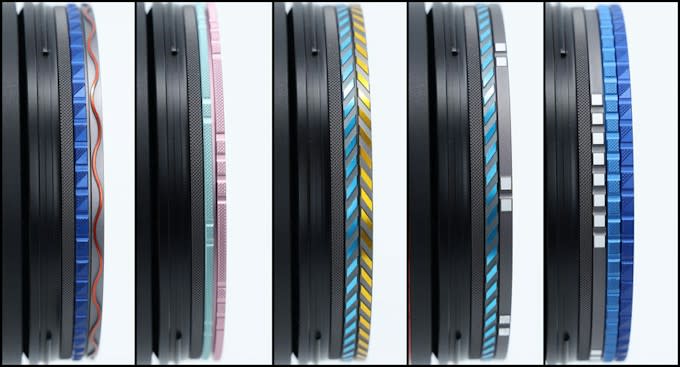
Unrivaled Versatility, Speed & Convenience when combining MAVEN filters – Left to Right: 1 – Linear Polarizer + Infrared 2 – 2 Stop ND + 4 Stop ND = 6 Stops 3- Blue + Gold Streak Combo 4- Blue Streak + 1/2 Diffusion 5- 1/8 Diffusion + Variable Polarizer Combo = 1/8 Diffusion Variable ND
A Smaller Graduated ND Filter
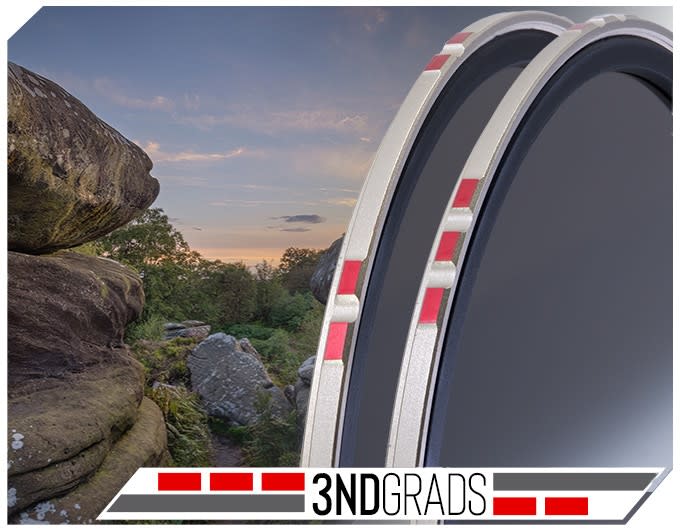
I have been a grad filter shooter for 16 years, and I do not enjoy carrying a big, clunky filter holder and a large piece of glass in my bag. Camera bag space is sacred, and over the years, I have learned that my grad filter system stayed at home unless I actively planned to use it. More often than not, when I didn’t bring it, I would then ‘stumble upon’ a spectacular ocean sunset, but I didn’t have my grad tools with me. Something had to be done to make grads smaller, lightweight, and always ready, living in my bag all the time.”
We spent months trying to design a “perfect” magnetic grad solution. Each time, it evolved into another “clunky” creature.
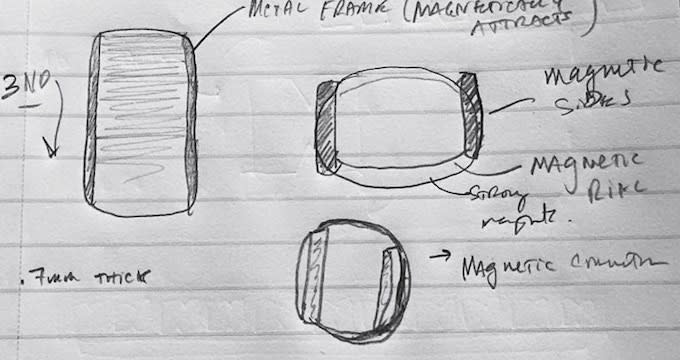
A failed MAVEN GRAD ADAPTER Design. The pursuit of a “perfect” grad filter always resulted in a larger, heavier & clunkier product. We needed a solution that could live in our camera bags by being smaller & lighter than anything else, even if it meant being “less than perfect”.
First principles guided us to: “Simplify”.
What would happen if we just made the grad filter dedicated to a specific fill amount?
It would be small, light and super convenient to use!
Many landscape shots crop the sky around 1/2 or 1/3* of the frame. At 16 grams in a lightning quick magnetic frame we were at least 10 times faster, and 10-15 times lighter than a traditional grad rig with filter.
(*Note: The 1/3 Fill Grad Filter works best on Native Size Lenses at their widest focal lengths. Stepping up or Zooming in will shift the gradient in the upwards direction).
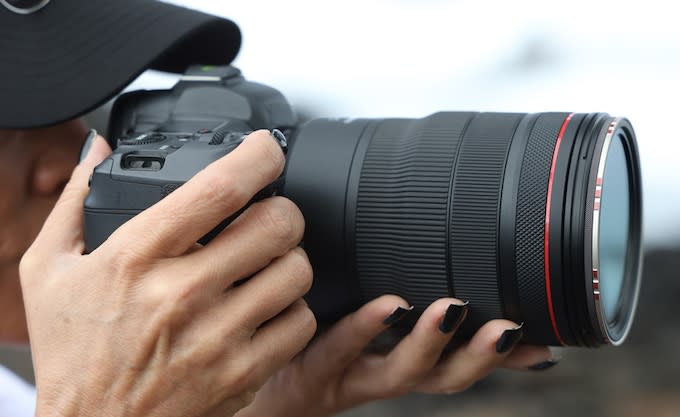
MAVEN’s Universal Language – Always know which filter is on your lens! Red = 3 Stops, Silver = Clear, 3 Marks = 1/3 – This is a 1/3 fill, 3 Stop Grad!
And so the first of the MAVEN grad filters were born. With such a small footprint, you could always be ready and let it stay in your bag!
But we didnt stop there….
The Magical MAVEN 1/2 Fill Variable Grad
There is another problem with grad filters; sometimes you want more filtration, sometimes less. This means carrying multiple filters with different filtration densities to cover every possibility. This is another inconvenience.
Was there a better way?
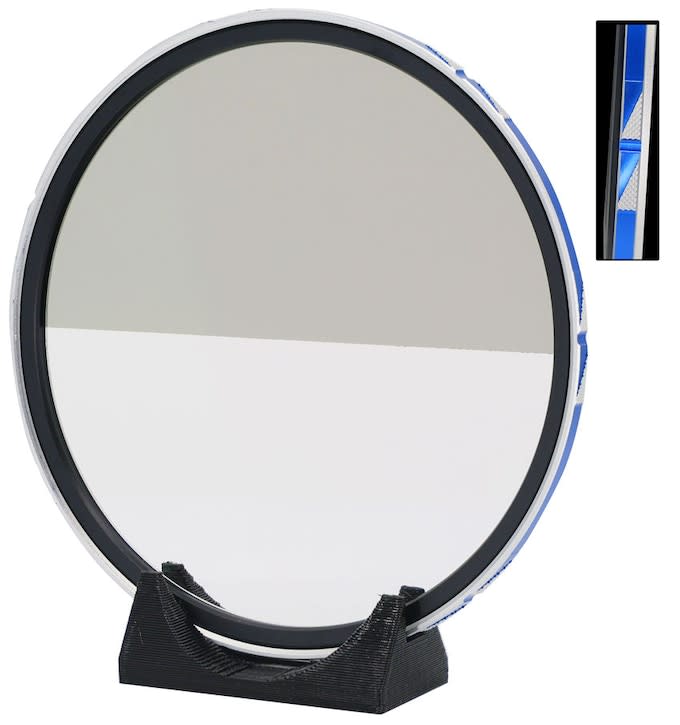
MAVEN MAGIC Variable Grad Teams Up with the MAVEN LPL, resulting in ~1.3-5 Stops of Graduated Filtration. Top Right: Blue Ring Denotes A Polarizer, 2 Long Silver Triangles Denote a Variable Grad at 1/2 fill. Note: The Hard Film Edge Disappears once LPL is engaged & is dynamic based on changes in Aperture & Focal Length due to optics, diffraction & Polarizer Interplay.
“Are you crazy?” My manufacturer inquired.
“This is the way.” I insisted
“We don’t even know where to start.”
After trying to explain it for over an hour, I made no headway. I got out my scissors & started cutting a sheet of polarized film, then sloppily taped it onto a splash guard, added the new MAVEN LPL prototype on top & with this, I recorded it’s performance on video & sent it to my manufacturer.
The First MAVEN Variable 1/2 Grad Prototype – Polarizing Film Cut By Hand Taped to a Splash Guard
“This is very interesting. We will try.”
A few weeks later, I had the new prototype in my hands. I do not often gasp in shock when testing products, this was an exception and recorded the moment for you to see with your own eyes:
Having a way to variably change the filtration of the horizon is a game changer.
The Very Hard Edge from the film? Strangely, it disappears after we put the LPL on.
By shifting the film on the filter off-center to a very specific position, we can move the grad-line by zooming in. We can also adjust the edge hardness by changing the aperture.
This means the Magic Grad has 3 variables:
Density – From 1.3- 5 Stops
Edge Position – Relative to how much we zoom in or out
Edge Hardness – We can make it harder or softer by changing our aperture.
This magical product is a powerful tool for landscape creators without needing a large & heavy filter set up. While it requires the MAVEN LPL filter to work, it is my personal favorite of Wave 2.
New ND Filters – 2, 4, 15, 18, & 20 Stops!
The New MAVEN 2, 4, 15, 18 & 20 Stop ND Filters
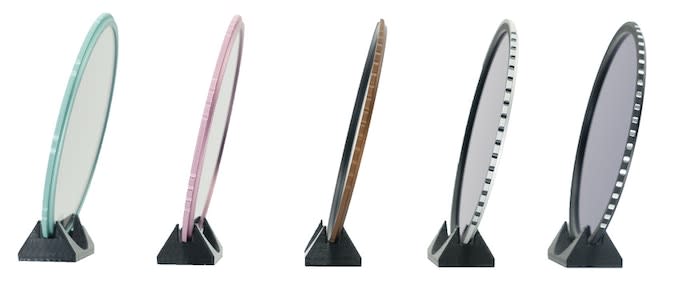
Many of you asked for more solid NDs. The 2 Stop(“Money Maker” Green – Made for professionals) & 4 Stop (4 Letters, P-I-N-K) allows users to get more specific & precise filtration control using solid NDs, a boon when using fixed ISO video cameras, but still wanting maximum color performance & quality in their imagery. Many landscape photographers have also requested the 4 Stop.
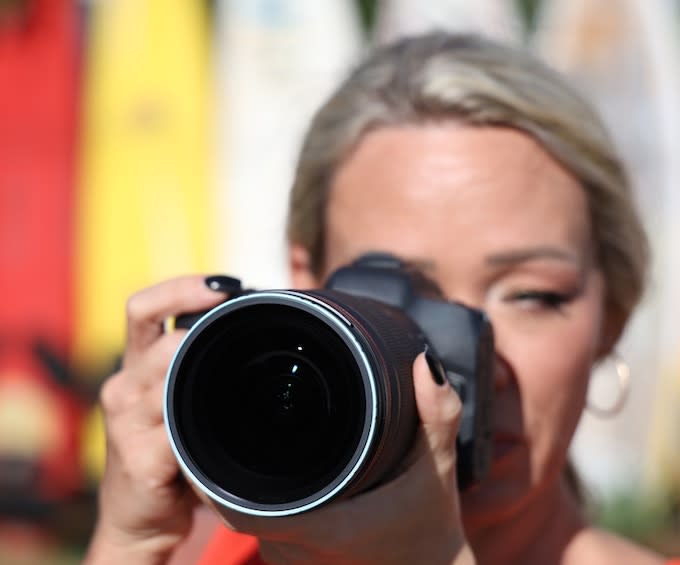
Each of the Wave 2 ND filters match the quality of our original NDs, including AGC Japanese optical glass, 16 layers of MRC coatings, hydrophobic nano resistance & Tier 1 Color Performance. Our extreme 18 Stop filters will be prioritized just in time to shoot the Eclipse of April 8 2024.
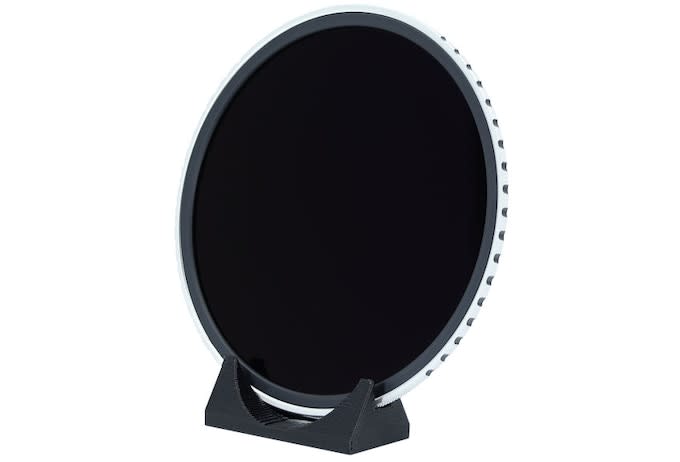
Silver & Black Attack – The MAVEN 18 Stop Ultra ND Recommended Filter for First Time Solar / Eclipse Shooters
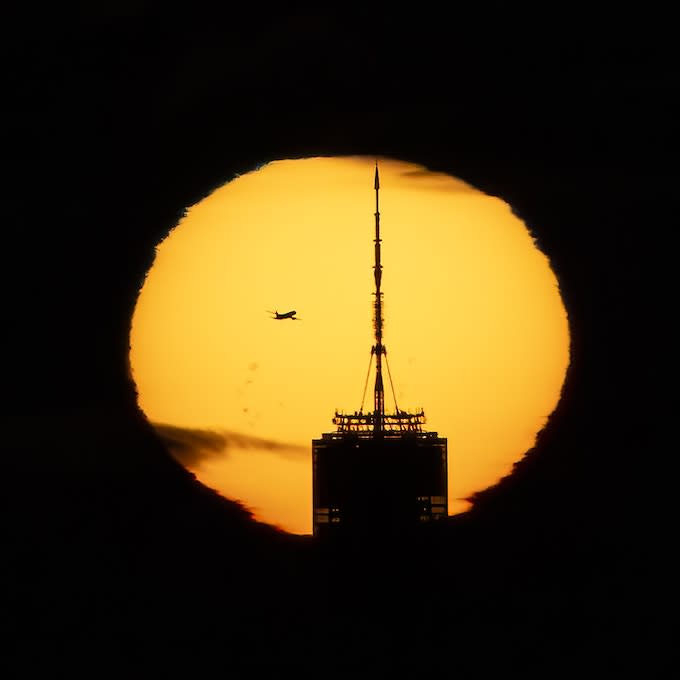
Image taken with new MAVEN 20 Stop ND Filter. Photo by Robert Zurfluh (www.outdoortravelphotography.com)
What Extreme NDs Are Good For:
•Very Long Exposures, even in daylight: These filters can turn turbulent seas into misty water or cloud movement into smooth, ethereal streaks across the sky:
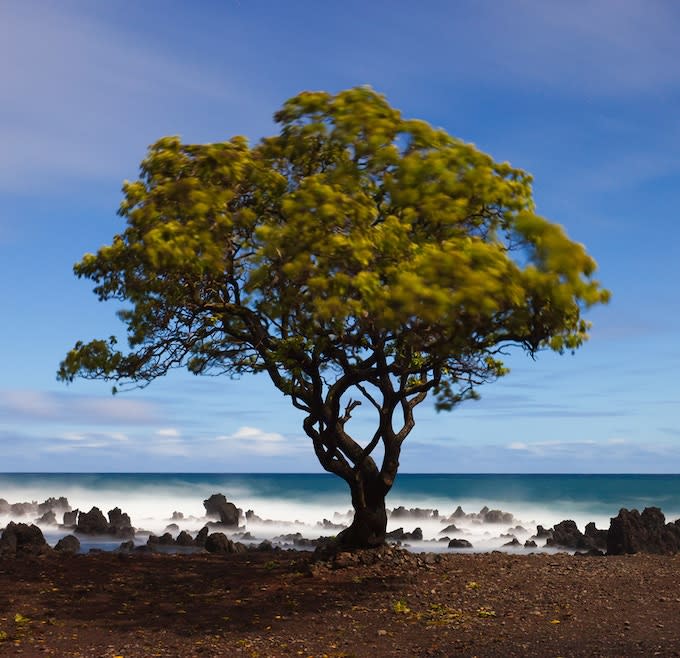
Capture Motion & Time with a 30 Second exposure in Sunny Daylight Image By Michael using a MAVEN Ultra 18 Stop ND Filter.
•Time-Lapses: Extended exposure times can add a cinematic, flowing motion to daytime time-lapse sequences.
•Shallow Depth of Field: In bright conditions, the ND filter allows you to open your aperture wide without overexposing, isolating your subject against a pleasing, out-of-focus background.
•Eliminating Moving Objects: Especially in urban and architectural photography, long exposures can make transient elements like pedestrians or moving vehicles vanish from the frame, emphasizing the static elements.
•Solar & Eclipse Photography Applications:
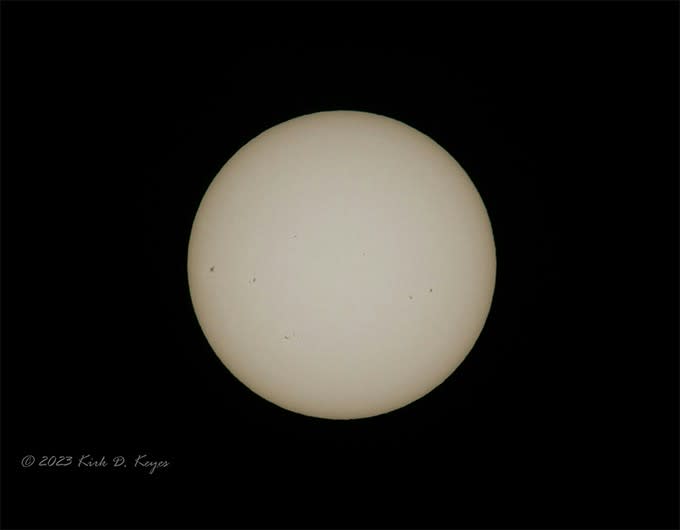
Solar Shot Captured with MAVEN prototype 20 Stop ND Filter by Kirk Keyes (www.keyesphoto.com)
Special Note on Solar Eclipses:
While these ND filters are powerful photography tools for reducing light intake, they are not safe for direct solar viewing with the naked eye. The sun emits UV and infrared radiation that can cause permanent damage to your eyes:
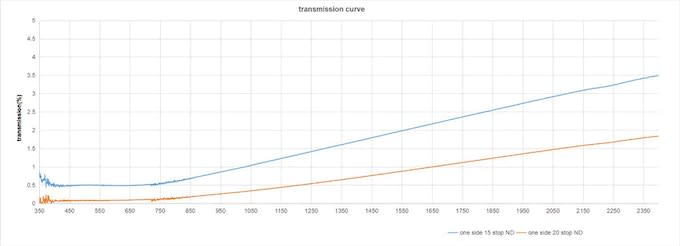
One Sided Spectrometry results of the 15 & 20 Stop MAVEN ND Filters. Double sided filters will see a 1 order of magnitude improvement.(Example: 15 Stop (blue) at 2400nm = 0.035 x 0.035 = 0.00122 or 0.12% Transmittance)Because some UV & IR is still entering the lens, we must say these filters are for photography & videography purposes only & you should NEVER use them to look directly at the sun.
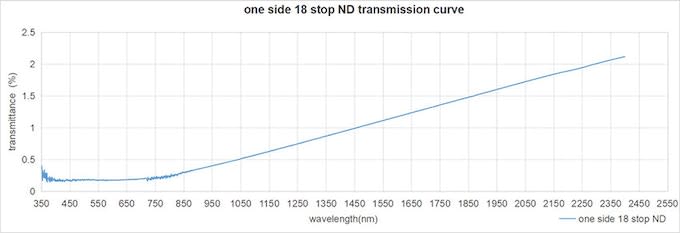
MAVEN Spectrometry Graph of 18 Stop ND, testing only one sideActual results are 1 magnitude of order lower.
In summary, 15, 18 & 20-stop ND filters offer photographers an array of creative possibilities, from long-exposure techniques to a host of specialized applications.
Heed all safety precautions, especially during events that involve direct sun photography like solar eclipses. DO NOT USE THESE FILTERS TO LOOK AT THE SUN!
MAVEN IR 720 – Infrared Filter
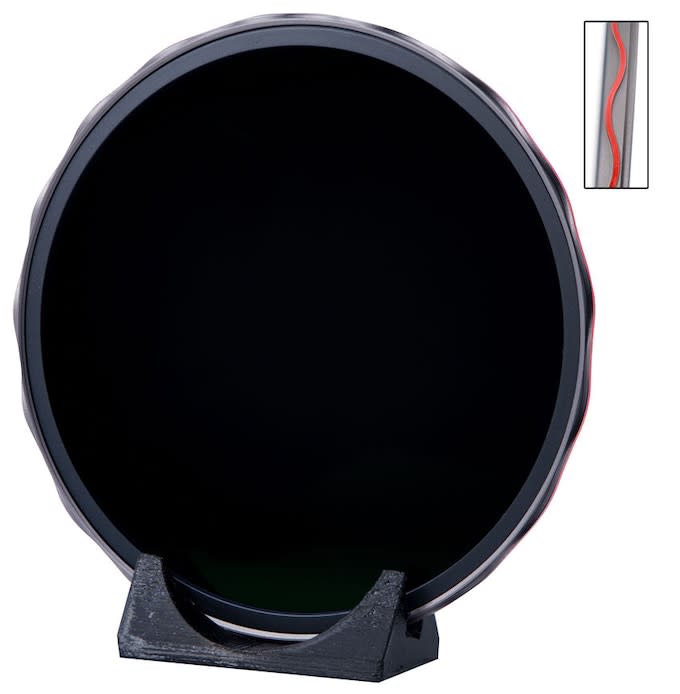
The NEW MAVEN IR720 – Blocks out Most Visible Light Below 720nm Allowing for Long IR Exposures Top Right: Wavy Red Sine Wave Denotes Infrared
The human eye is sensitive to visible light spectrums between 300-700 nanometers. There exists a wide range of light we cannot see, including the Near Infrared spectrum which runs from 700-2500 nm.
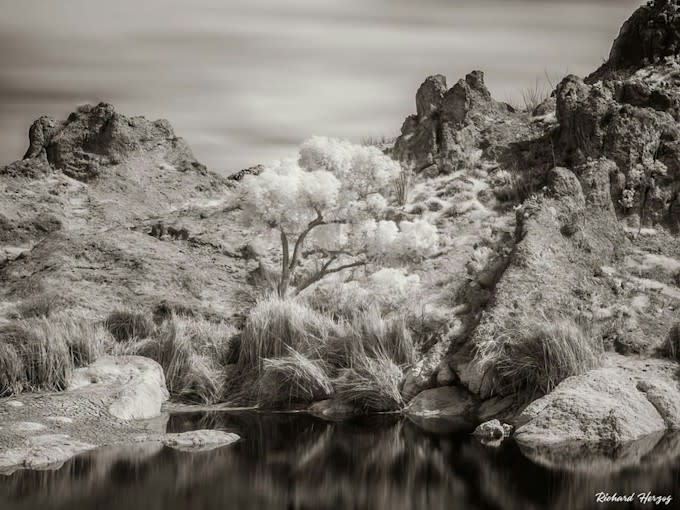
Desert Landscape By Richard Herzog Using the MAVEN IR 720 Filter
Most camera sensors are sensitive to Infrared, however, modern cameras typically include IR Cut filters, greatly reducing the amount of IR light in normal captures, resulting in mostly visible light creating the image.

Vegetation Reflects Infrared Light, Appearing White with Editing MAVEN IR 720 Filter in Action from Left to Right: Left – Image of a Rich Green Leaf with no IR Filter. Middle – Image of the same leaf using a MAVEN IR 720 Filter Right – Edited Red Channel of MAVEN IR 720 Leaf Image
One workaround is to have a technician remove the IR filter from a camera’s sensor. This is typically irreversible and can be expensive, but will maximize a camera’s ability to capture IR light, including faster shutter speeds.
The MAVEN IR 720 is an inexpensive & fast entry into the Infrared world. Think of it as long-exposure IR photography. This filter blocks most of the visible light below 720nm (hence the name), maximizing the small amount of IR light that penetrates a cameras IR filter. It is a fantastic way to experiment with IR photography, without needing a camera conversion!
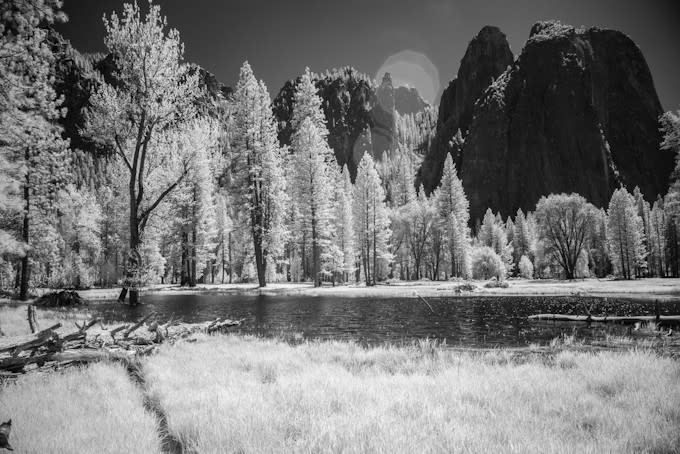
Taken with the MAVEN IR 720 Filter. Photo By Richard Herzog (www.richardherzog.com)
Water and glass, often transparent in the visible spectrum, usually appear very dark in infrared photography because they absorb infrared light. Skin tones can also look smoother and more uniform when photographed in infrared.
Recommended with a tripod & RAW files, this is a limited-edition MAVEN filter.
Starry Focus Filter
Are you into Astrophotography or plan on shooting the milky way? Our new Starry focus filter will make focusing on stars a snap! Pop this filter on, manually focus using the star indicators, take the filter off and you are in business! No more dealing with very hard to focus stars in your monitor.
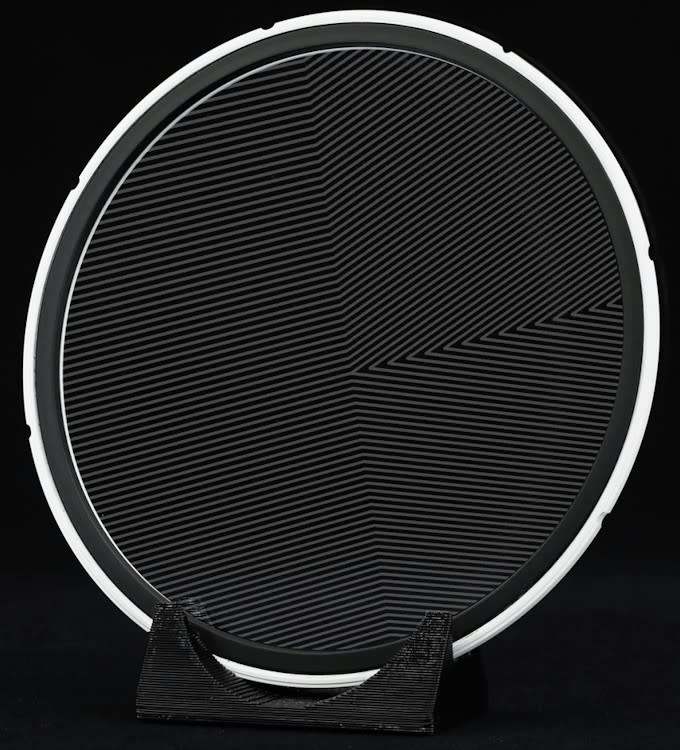
MAVEN STARRY FOCUS FILTER
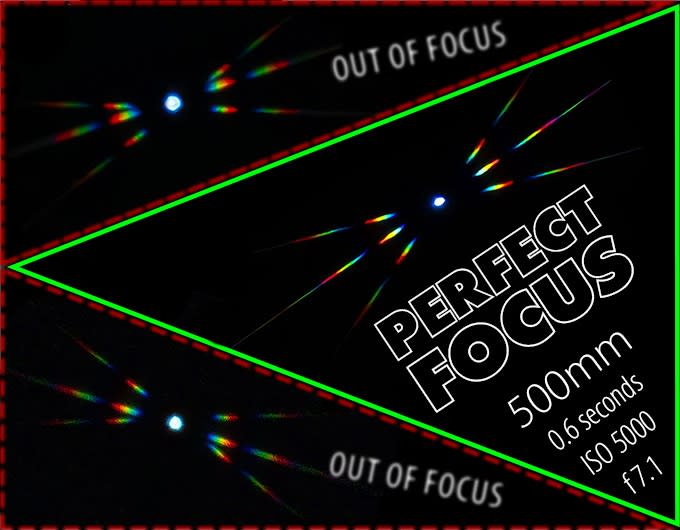
Starry Focus Mask Examples provided by Steve Bell
Lens Flare Filters
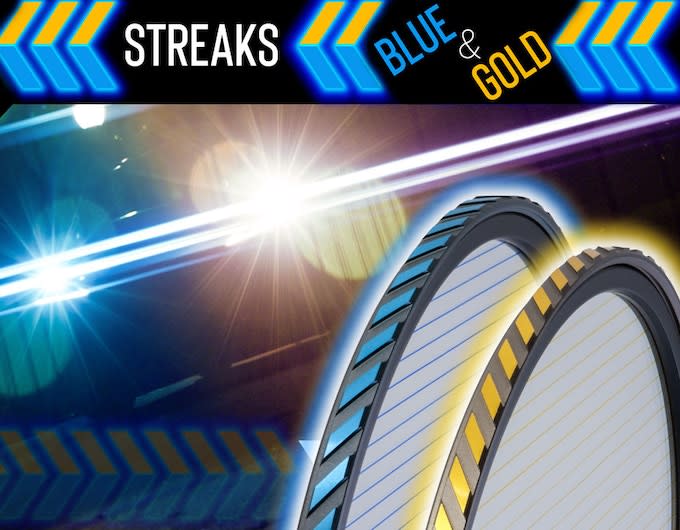
When our videographer legends asked us “what about flare filters?”, they were talking about filters that mimic anamorphic lens effects, seen as blue or orange streaks of light that stretch across the frame. (We see them in many JJ Abrams movies).
Streak filters replicate this effect by having a series of fine, horizontal lines made into the filter. When a bright light source is in or near the frame, these lines scatter the light, creating that iconic streaking flare. While they can’t replicate all the features of an anamorphic lens, they do an admirable job of mimicking the lens flares and some of the bokeh characteristics. Because of their construction, we use a special type of optical glass other than AGC, which retains High Definition sharpness and strength while allowing for these embedded components. Suffice it to say, if flares are your thing, you will love the bling!
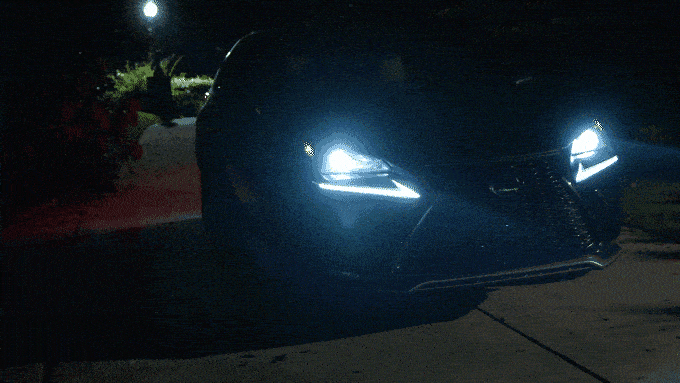
Our new plasma streak filters some of the most gorgeous ring designs we have ever made!
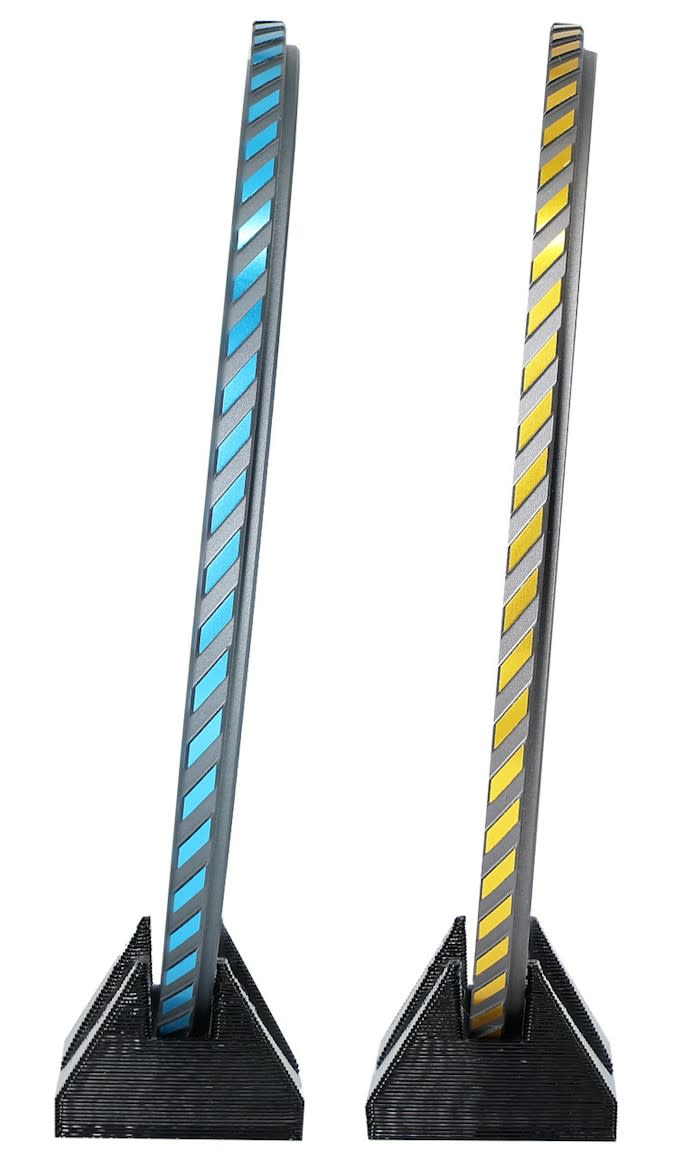
Early MAVEN Blue & Yellow Plasma Streak Filters In same DirectionThe Final Designs Invert the Direction of the Gold Knurls to Differentiate them from the Blue
Why the New Cap?
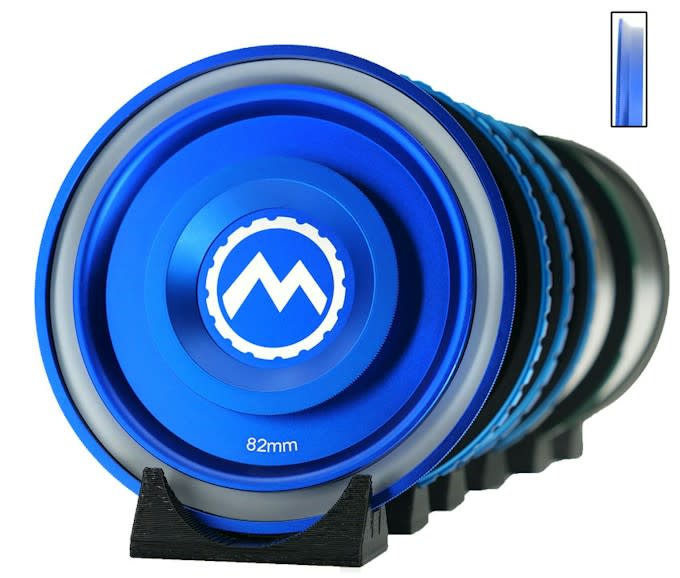
Many of you asked for an easier-to-use cap, wanting to be able to remove it while under a lens hood, as well as not being so strong as to remove other filters when pulling directly off.
Our new MAVEN 2.0 Cap does just that, offering a central grip, very slightly reduced strength (1-2 Newton Reduction), rubberized lint trap, as well as tilting edge to allow for better handling when removing. The center wheel can be removed, opening up more options for grip customizations in future products.
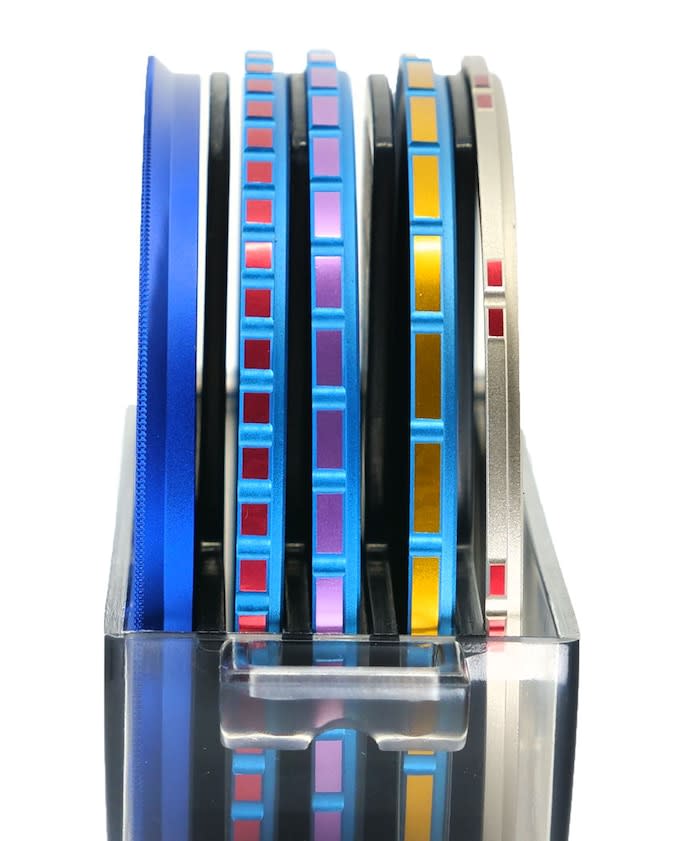
The NEW MAVEN 2.0 Cap Fits inside both v1 & v2 of our Quick Cases!
The New Step-up Splash Filter
Tired of using a lens cap altogether? We have you covered! (Pun intended)
Our new Step-Up Splash Filter (Silver & Green) addresses both the needs of filter adaptation & elemental protection for your camera lens. (Because it has a lens, we classify this as a filter instead of an adapter only). This means the front elements of your expensive lenses can always be covered, even to a greater degree than using a lens cap! (Note: MAVEN released regular “splash-adapters” earlier in 2023, this takes that same idea to step up rings.)
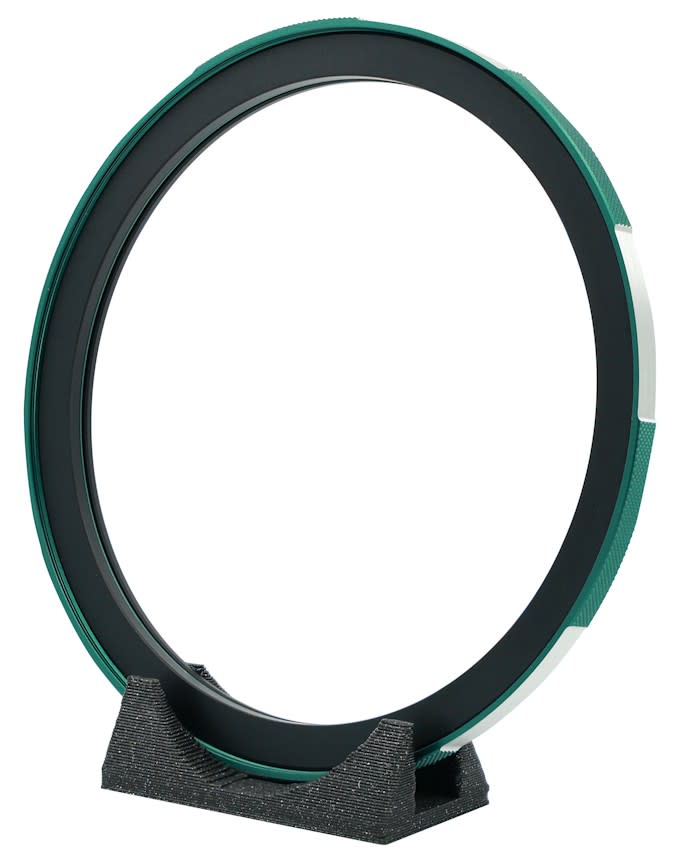
MAVENs New Step-Up Splash Adapter – Combines a Green Step-Up Ring With a Weather Sealed Silver Splash Guard
•Step-Up Ring Function (Green): The step-up ring component allows photographers to attach filters larger than the native thread size. For example, if you have a 77mm lens but an 82mm MAVEN filter, you can use the step-up ring to fit the larger filter onto the smaller lens. This feature can be incredibly cost-effective, allowing you to use a single set of filters across multiple lenses with different diameters.
•Splash Guard (Silver): The built-in splash guard provides an added layer of protection against water splashes, dirt, dust, grime, light rain, mud and other hazards that you might encounter while shooting. This reduces wear on the front of your camera lens which generally has a special coating from the manufacturer as well as risk of light impact damage.
Use it as an adapter, or a splash-guard or both at the same time!
Step-Up Splash Guards will be available in the following sizes (Where the first number is the lens thread size & the second is the filter size) –
77-82
72-82
67-82
72-77
67-77
67-72
We have a massive selection of regular step-up rings (without the glass) that are available as add-ons in this kickstarter.
Meet Our New Quick Case v2.0!
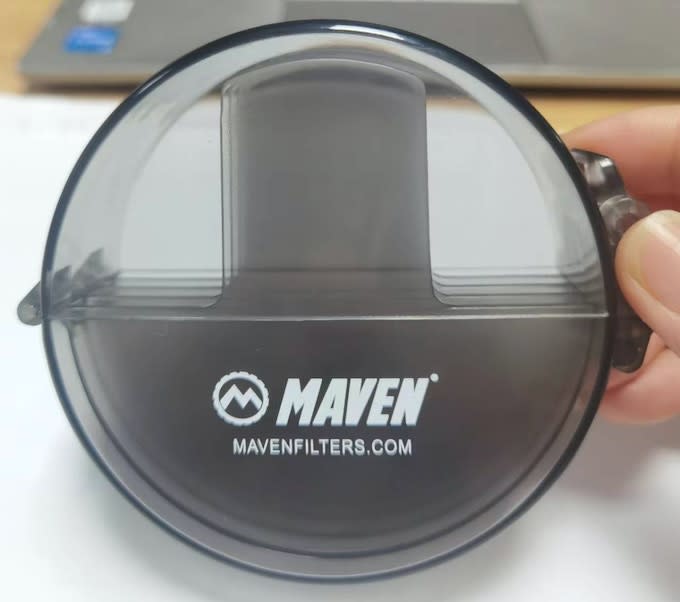
First Prototype of the MAVEN Quick Case 2.0
The unsung hero of our first kickstarter was our patent-pending, transparent-blue “Quick Case”, which keeps filters separated while allowing for easy identification & access.
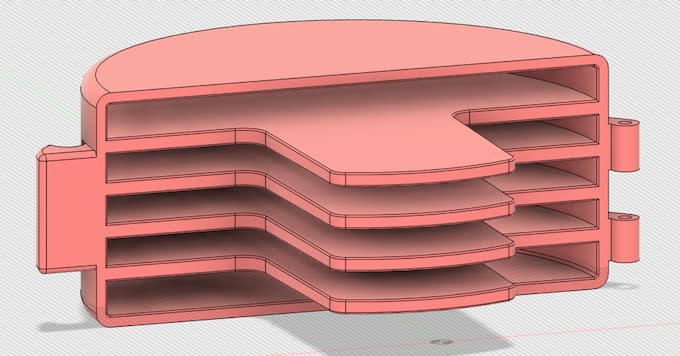
MAVEN Quick Case 2.0 – Accommodates Up to 2 Large Width Accessories / Filters & 3 Medium Width Filters, Or 5 Total Medium / Slim Filters
However, the original case was limited in that it was designed mostly for our ultra-thin filters, and being that so many of our new polarizers are a touch wider, we needed a second design of the quick case, which will accommodate 3-5 Medium Width filters (Polarizers, Dark CPLs, IR, Streak, Diffusion Filters) including 2 large slots on the end which can be used for Caps & Step Up Rings. We also wanted a new color to differentiate from your other blue set as your collection grows, so we went with Gray.
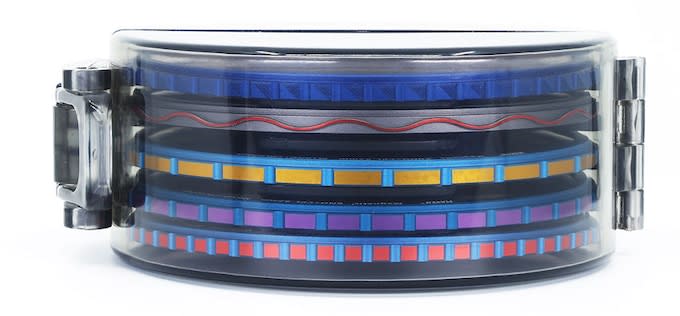
MAVEN Quick Case 2.0 – Locate your entire filter set without opening the case! Fits in most jacket pockets.
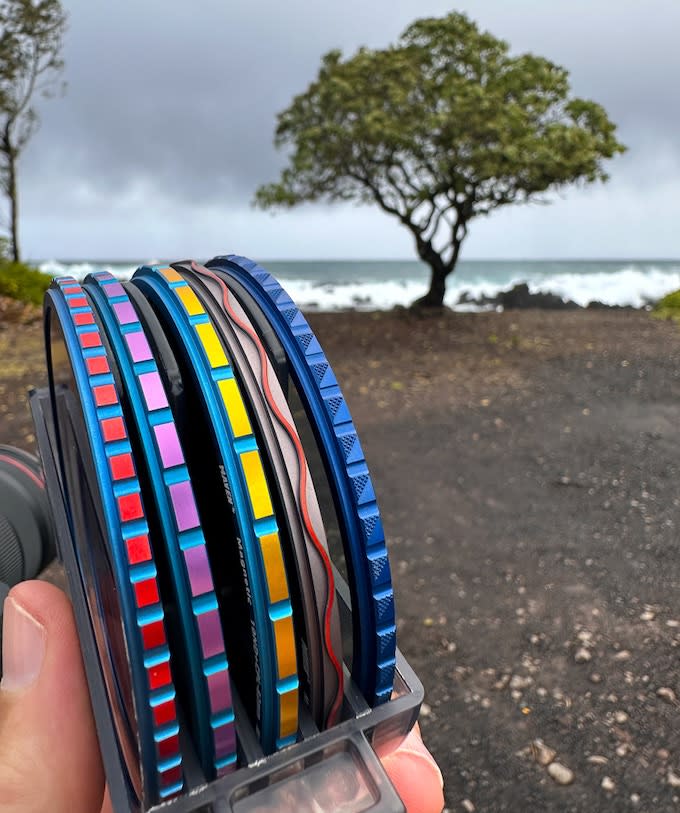
The Final DFM (Design for Manufacture) MAVEN DARK CPLS, IR 720, LPL & Quick Case 2
What is the shipping plan?
With our Kickstarter project ending in late Jan 2024, surveys should be filled out by mid February, after which we will complete our final production & packaging. We typically send our filters in batches to manage volume, with the goal of being as fast as possible, but please keep in mind there are almost always some surprises that can cause delays.
WAVE SHIPPING GOALS:
Shipping Batch 1 – March 2024
Shipping Batch 2 – April 2024
Shipping Batch 3 – May 2024
If your reward does not state a Batch, you are in Batch 1.
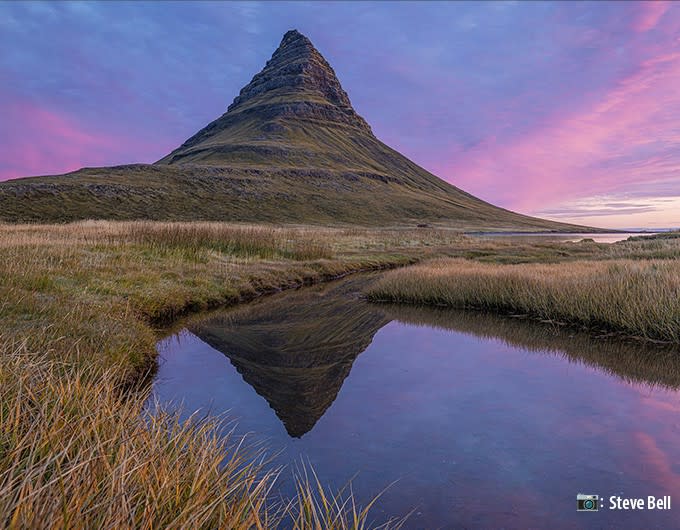
Gorgeous Kirkjufell in Iceland by Steve Bell (https://www.stevebellphotography.co.uk) Using Maven Filters
How does the Lifetime Manufacturers Warranty Work?
The warranty covers all manufacturing defects. This includes issues arising from errors in the manufacturing process, encompassing aspects such as the glass, coatings, color performance, aluminum, and machining. If any defects become apparent at any point during your ownership, we will repair or replace your product at least once after you have received it. (Note: The Lifetime manufacturers warranty does not cover loss, accidental or impact damage or general wear & tear. However, please talk to us if/when there is a problem and we will do all we can to make it right at a discounted rate if it falls outside of the warranty. You are part of the MAVEN family & we will take care of you!)
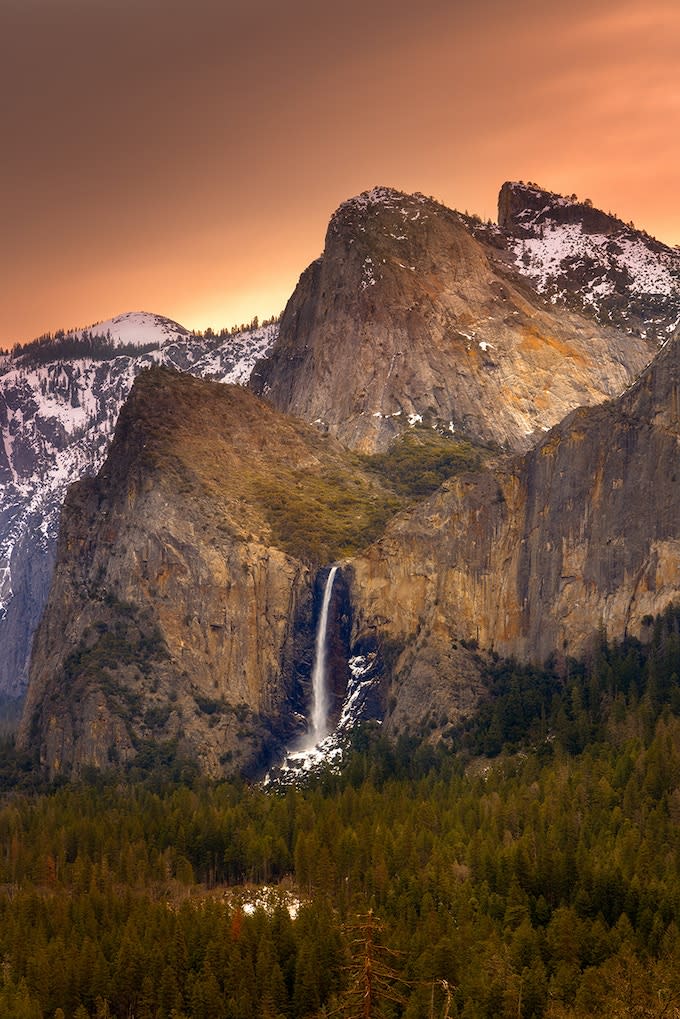
Bridalveil Falls By Ambassador Henry Eiland Using MAVEN Filters
How does Theft Protection Work?
If your MAVEN filters are stolen, provide us with proof of purchase & an official police report indicating which filters were stolen. We will be happy to replace your filters if this happens to you.
YOU WILL LOVE THESE FILTERS!
I have tested and owned dozens of different brands of filters. I exclusively use MAVENs in my own shooting because they are the easiest, fastest, and most enjoyable filters to use, offering world-class quality. I no longer need to color correct in post or adjust my white balance between filter changes. The extra steps are gone!”
You know who I am, and if you have read this far, you now know my attention to design, detail & quality. This is not our first rodeo on Kickstarter, so I am even more confident in our ability to bring you an elite filter product which will greatly enhance your shooting experience through convenience design.
From the manufacturing team, our awesome testers & fulfillment members supporting this Kickstarter, we are looking forward to knocking this out of the park for YOU, once again!!
Thank you so much for your support!
Michael Andrew, CEO
Michael The MAVEN, LLC
The MAVEN Magnetic Team:

The MAVEN Filter Team

